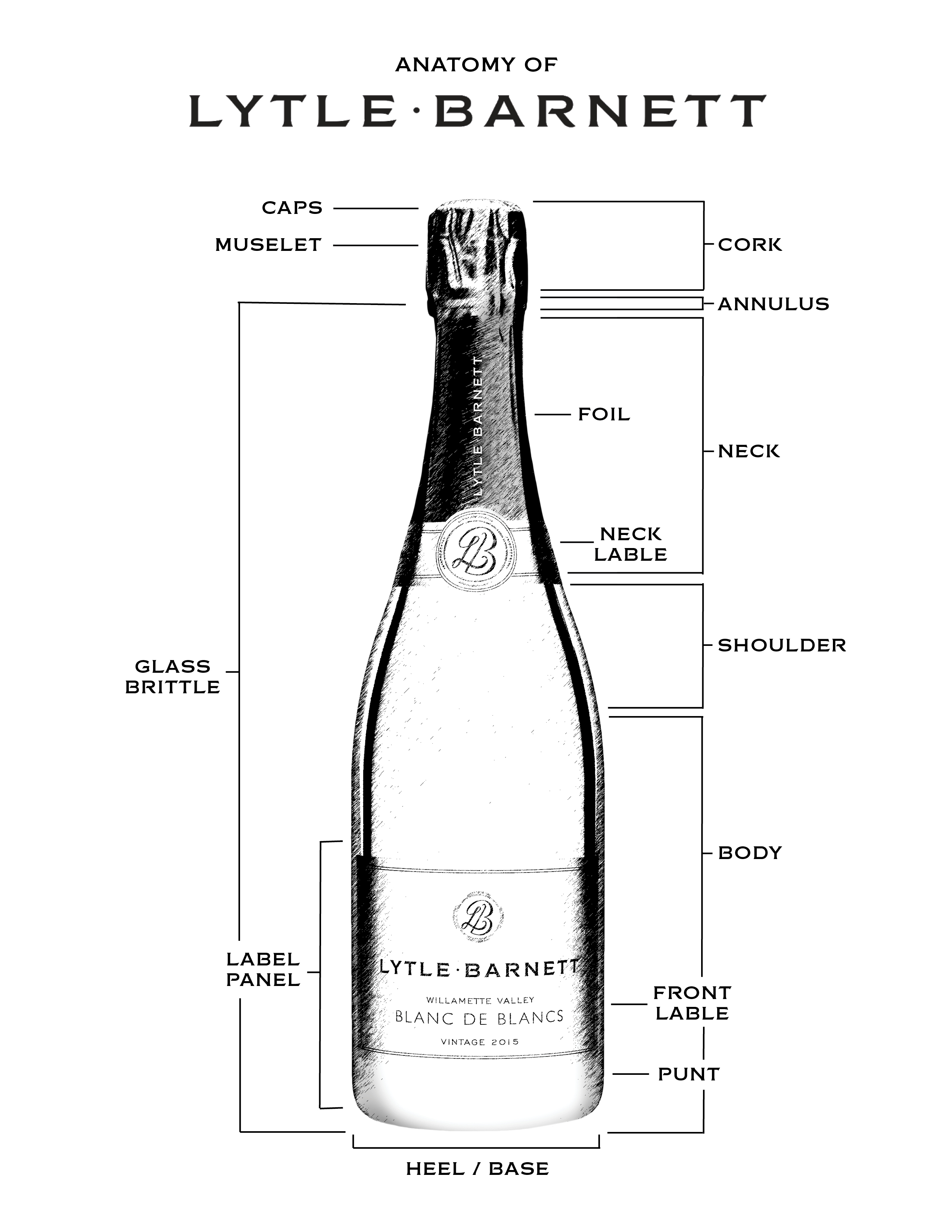Our sparkling wine is made in the French tradition, and we use bottles that mirror those used for Champagne. Today we will be breaking down the specific architecture of these bottles, starting from the top!
CAPS - A metal cap is incorporated in our design and sits on the muselet which shows the Lytle-Barnett emblem and the purpose is to help hold the cork in place.
MUSELET - The wire cage that secures the cork in the bottle, keeping it sealed to the point of drinking. “Mesulet” which comes from the French word museler (muzzle).

CORK - Champagne corks are produced from natural cork and are critical in sealing the product. The cork is held in place by a wire cage (Muselet) topped with a metal cap (Cap).
ANNULUS - The annulus is the rim at the top of the neck. This is important to the closure mechanism as it is the anchor point for the wire cage that holds the cork in the bottle.
FOIL - The foil covers the neck of the bottle and also covers the cork arrangement. Its purpose is purely to keep the cork clean.
NECK - The slender part of the bottle between the closure and the shoulder.
SHOULDER - The shoulder of the Champagne bottle is fairly self-explanatory and separates the neck and body. They come in various profiles depending on the bottle design.
BODY - The body is the main part of the bottle, generally cylindrical but diameter can vary from top to bottom (larger at the top than the bottom, or vice versa).
LABEL PANEL - The label panel is where you should find information about the wine. Some of the information is controlled by law like volume of the liquid, ABV (alcohol content by volume), standard drinks, vintage, varietal, origin etc. Each producing country has different regulations.
FRONT LABEL - Where to find key information on the front of the bottle. Opposite the front label may be a back-label where the producer is free to add more information.
PUNT - At the very bottom of the bottle you will find an indentation in the glass. This is correctly named the Punt. It is there to give the bottle greater strength in order to be able to cope with the pressure created by the dissolved CO2 in the Champagne which provides the all important fizz. Incidentally, there is around 2-3 times the pressure of a car tire inside a bottle of Champagne (5-6 bar typically).
HEEL/BASE - The heel is simply the base of the bottle.
GLASS BRITTLE - The Glass Brittle is the whole bottle below the cork.

